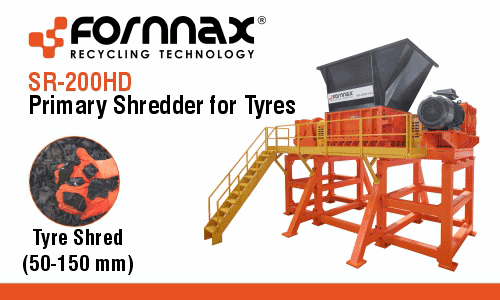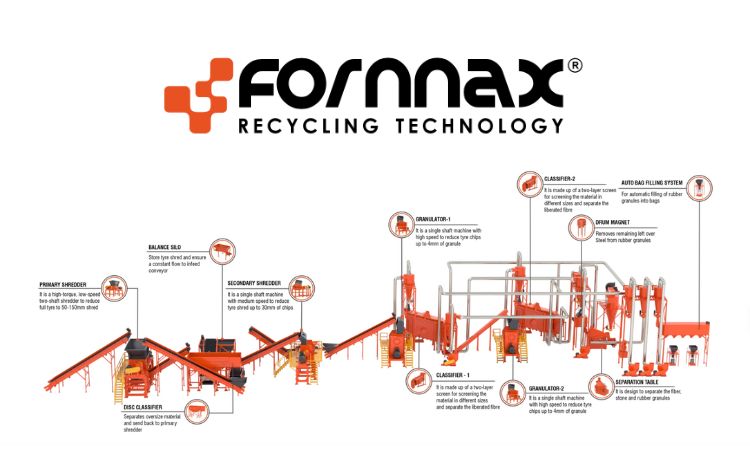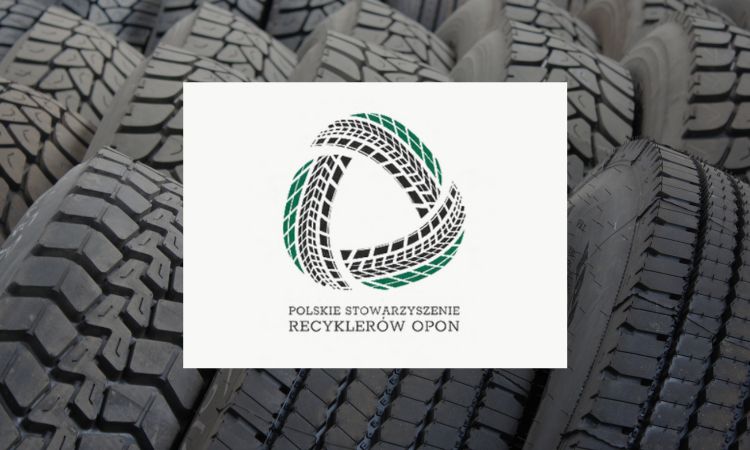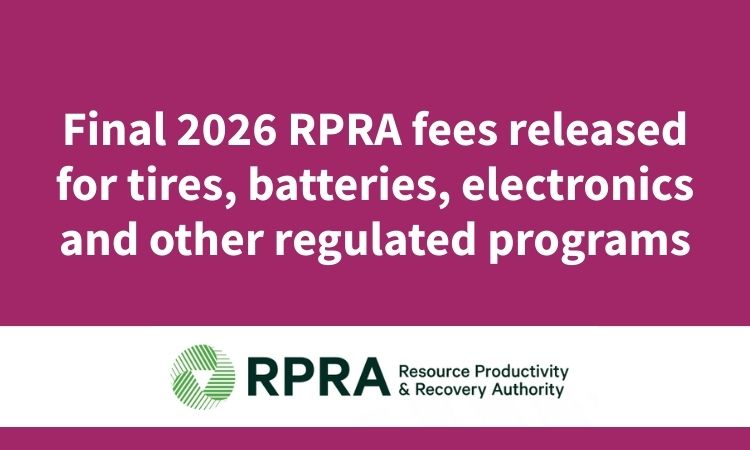Weibold Academy: Tire pyrolysis oil under RED III. How TPO can (or can’t) clear the 70% bar
Weibold Academy article series discusses periodically the practical developments and scientific research findings in the end-of-life tire (ELT) recycling and pyrolysis industry.

These articles are reviews by Claus Lamer – the senior pyrolysis consultant at Weibold. The reviews aim to give industry entrepreneurs, project initiators, investors, and the public a better insight into a rapidly growing circular economy. At the same time, this article series should stimulate discussion.
For completeness, we would like to emphasize that these articles are no legal advice from Weibold or the author. Please refer to the responsible authorities and specialist lawyers for legally binding statements.
Introduction
Tire pyrolysis oil (TPO) has landed at the intersection of two big policy drives: circularity for end-of-life tires (ELTs) and the EU’s push to scale recycled carbon fuels under RED III. Chemistry is attractive — a liquid fuel from a widespread waste stream — but the arithmetic is brutal. Combustion emissions alone push TPO very close to conventional diesel on a life-cycle basis, meaning TPO alone cannot meet RED III’s 70% GHG reduction requirement without using credits tied to the tires’ alternative fate. Properly applied e_ex-use (diversion) credits are therefore decisive: they can turn TPO from a near-miss into a qualifying recycled carbon fuel — but only if the baseline is robustly documented and upstream emissions are tightly controlled.
Why combustion sets the hard baseline
RED III requires the life-cycle GHG intensity of recycled carbon fuels to be expressed in gCO₂e per MJ of fuel and compared with a fossil comparator. For liquid transport fuels, the EU’s fossil comparator is around 94 gCO₂e/MJ. TPO’s upstream energy and logistics are relatively modest — typically a few gCO₂e/MJ when processes are optimized — but the end-use combustion dominates the footprint. Like diesel, TPO releases roughly 73 gCO₂/MJ on combustion. That leaves very little headroom to reach a net intensity below the ~28 gCO₂e/MJ target implied by the 70% saving. Put bluntly: unless something offsets much of that combustion CO₂ (or a significant fraction is shown to be biogenic), meeting RED III’s 70% test on process improvements alone is functionally impossible.
The decisive role of e_ex-use credits
RED III explicitly requires accounting for the “existing use or fate” of the waste input. For ELTs, this is the e_ex-use term: the emissions (or energy services) are forgone when tires are diverted from their baseline pathway (e.g., burning as Tire-Derived Fuel (TDF) in cement kilns, energy recovery in waste-to-energy facilities, or landfills). Where tires would otherwise have been combusted for energy, diverting them to pyrolysis creates an avoided emissions credit that can be attributed to the TPO. In practical terms, if the tires had supplied megajoules of energy that would otherwise have required coal or fossil fuel, the CO₂ that that fossil replacement would have emitted can be subtracted from the TPO life-cycle. This e_ex-use credit is often the single largest lever to push TPO below the RED III threshold.
Two things matter for that credit to hold up under regulatory scrutiny: (1) rigorous evidence of the tires’ baseline fate (contracts, industry statistics, fuel displacement calculations), and (2) conservative, well-documented calculation of the displaced fuel/emissions in the receiving system (e.g., cement kiln fuel mix). Auditors and competent authorities will challenge poor documentation or optimistic assumptions.
Practical pathways and potential to reach 70%
Even with an essential role for credits, there are concrete, measurable steps producers and value-chain actors can take to make the case as robust as possible — and to maximize the size of the diversion credit:
1. Prove the baseline and maximize the diversion credit
Document where tires would have gone: if a material share has historically been used as TDF in cement kilns or incineration with energy recovery, quantify the displaced fossil fuel and associated emissions. The larger and better-supported the substitution of fossil energy, the larger the e_ex-use credit. Contracts, industry flows, and regional fuel mixes are the evidence regulators seek.
2. Tighten upstream performance (logistics, pre-treatment, process efficiency)
Although combustion dominates, upstream emissions do count. Measured data on truck km, backhauls, shredding electricity consumption, and actual pyrolysis fuel balances reduce uncertainty and shrink upstream gCO₂e/MJ. Switching to renewable electricity or low-carbon fuels for transport — and adopting energy-efficient reactors with high oil yields and smart heat integration — can trim several grams per MJ.
3. Optimize co-product allocation (rCB, steel)
Recovered carbon black (rCB) and steel are valuable co-products. RED rules allow allocations by economic value or energy content. If produced and sold as material co-products, appropriate allocation reduces the share of process emissions borne by the oil. Demonstrating market value and stable offtake for rCB strengthens this route.
4. Demonstrate biogenic carbon where appropriate
Rubber contains some natural (biogenic) carbon. Where robust lab analysis shows a verifiable biogenic fraction in the oil, the biogenic share can, in principle, be treated differently for accounting purposes. This is complex and requires a stringent chain of custody and verification.
5. Consider policy-driven synergies (e.g., carbon capture, co-processing)
Where feasible, carbon capture on process CO₂ streams or co-processing TPO in refineries under low-carbon electricity/hydrogen regimes reduces the lifecycle intensity. These are capital-intensive routes but could be material at scale.
International significance: LCFS, trade, and exporters
The EU is not the only policy driver. North American LCFS programs (like California’s) and Canada’s Clean Fuel Regulations use different baselines and credits and can accept fuels or credits from international suppliers under well-defined rules. For exporters, the implications are twofold:
- Access to markets depends on alignment with the methodology. Buyers in LCFS jurisdictions expect certified life-cycle scores; a TPO pathway that banks on RED-style e_ex-use credits must demonstrate equivalently robust avoided-use accounting for an LCFS auditor to accept it.
- Market arbitrage and demand for verified low-carbon liquid fuels may grow. Suppose TPO can be shown to deliver regulated credits in several jurisdictions (EU, California, British Columbia). In that case, export revenues can improve project economics — providing an incentive to invest in the upstream documentation and measurement systems that regulators demand.
Critically, international programs often scrutinize “baseline” claims and demand transparent chain-of-custody and displacement calculations. This makes early, conservative accounting and third-party verification a commercial advantage for exporters.
The UK special case: SAF Mandate and a lower bar
The UK’s SAF Mandate sets a different tone. It requires that SAF deliver at least 40% GHG savings against a fossil jet comparator of ~89 gCO₂e/MJ — a lower threshold than RED III’s 70%. For TPO-derived aviation fuels or co-processed intermediates destined for the UK market, this means two things:
- A more achievable regulatory target. Even with modest upstream improvements and smaller diversion credits, TPO pathways have a clearer chance to qualify under the UK’s 40% rule than under RED III’s 70% bar.
- Policy arbitrage potential. Producers could prioritize exports or domestic routes where rules are more permissive, but careful attention to sustainability criteria and lifecycle accounting is still mandatory.
This UK nuance matters for developers and traders seeking route-to-market flexibility and may influence siting and commercial strategies for pyrolysis assets.
Implications
- TPO alone cannot meet RED III’s 70% savings threshold without credits, as combustion emissions set a hard baseline. The combustion CO₂ is large enough that upstream improvements, while necessary, cannot bridge the gap on their own.
- Properly applied e_ex-use credits are decisive, transforming TPO from marginal savings to a qualifying pathway. The credit depends on a rigorous, conservative demonstration of the tires’ alternative fate and the resulting quantitative fossil displacement.
Strategic Takeaways
- Document the baseline rigorously. Contracts, regional ELT fate statistics, and conservative displacement calculations are the single most important assets for an approved RED III pathway.
- Measure relentlessly. Actual logistics, electricity, and process data beat defaults. Renewable electricity, efficient heat integration, and high oil yields materially strengthen the case.
- Monetize co-products and secure offtake. rCB and steel can shift allocation and improve the oil’s footprint. Stable markets for materials are therefore strategic, not just a by-product.
- Think globally. Align RED-style accounting with LCFS and other international program rules to access multiple markets and credit revenues. The UK’s lower SAF threshold offers a pragmatic export opportunity.
- Prepare for verification. Auditable trails, third-party checks, and conservative assumptions reduce regulatory friction and commercial risk.
Conclusion
TPO embodies the promise and paradox of recycled carbon fuels: it offers circularity and a route away from landfill, yet its combustion-driven emissions create a steep regulatory hill to climb. The path to RED III compliance is not a technical curiosity but a paperwork and proof exercise — one that rewards conservative, well-documented baseline claims, measured operational excellence, and innovative commercial strategies that combine co-product value, renewable energy, and international market access.
If you would like to gain deeper insights into this topic, please don't hesitate to contact the author, claus@weibold.com.
Weibold is an international consulting company specializing exclusively in end-of-life tire recycling and pyrolysis. Since 1999, we have helped companies grow and build profitable businesses.









